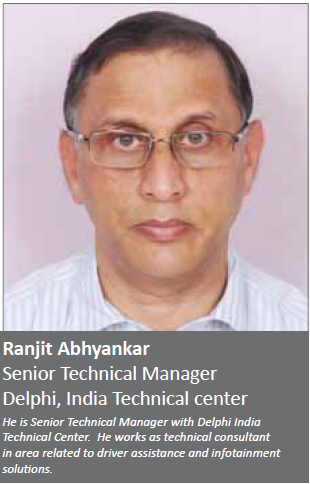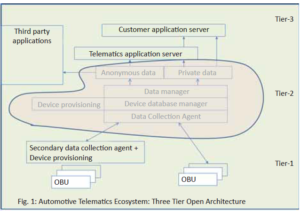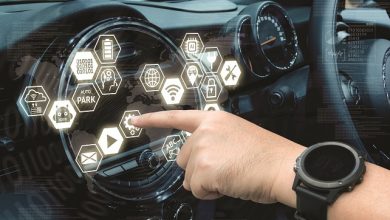Automotive Telematics Ecosystem: An open system approach

Author: Ranjit Abhyankar, Delphi, India Technical Center
In the next few years, with advancement of connected systems (embedded units, mobile based and V2X), it will become increasingly important to develop open systems to harness the full potential of connectivity.Open system architecture will define the interface layer specifications enabling multiple ecosystem partners to interact seamlessly.
With cars becoming more affordable and limited road infrastructure, the urban transportation landscape is becoming more congested. Pollution and associated social issues are taking a center stage. In this changing environment, it is becoming important that the data collected by the connected system is not only used to improve operational efficiencies, provide on time deliveries and safety services, but evolve new services and business models.
It is also becoming clear thata single operator or service provider will not be able to understand the needs of the complete ecosystem, let alone build all the required applications.
Today, most of the telematics players have a closed system. This puts the onus of understanding and developing the applications on the telematics service provider (TSP) and/or customers. This is not a viable option as many TSPs and customers may not understand all the requirements of a business.
The open framework approach will enable a host of third party application developers to develop diverse application which may not necessarily fall in the domain of the end customer or telematics service provider. For example, anonymous data from a particular section of a national highway can be analyzed to suggest the best location to open a restaurant on the highway. Depending on the nature of traffic (commercial, passenger), the nature and type of restaurant can be different.
Similarly, select private data (only the arrival/departure info and mileage) from a logistics provider can be shared with dealer service agency. The service agency can monitor the arrivals of vehicles at hub locations and the mileage clocked by a vehicle. This will reduce service costs and vehicle downtime for the logistics company. The same private data (trip information + goods manifest) can be used to optimize the transportation cost.
The need of the hour is an open system which allows various stakeholders to interact and utilize the data in a meaningful way, while maintaining security and privacy; and at the same time providing flexibility to each of the stakeholder to innovate and differentiate services.

Open Platform approach
Figure 1 depicts a framework for an open architecture. The proposed architecture comprises a 3 Tier system of components. The interfaces at each layer are defined and standardized.
- Tier 1: Data Collection Agent (DCA). The interface to the communication gateway can be an open standard. However, the data can be encrypted and secured for privacy. This will allow multiple on-board-units (OBU) suppliers to talk to a particular server in a seamless fashion.
The data collection agents may sourcedata from
- OBU: For instance, a small fleet operator who has installed aftermarket OBU can directly talk to the communication gateway and an OEM can have its own private server to talk to the OBU.
- Secondary data collection agent: An OEM can have its own private data collection agent to talk to the OEM installed OBUs. The data collected from the OBUs can be filtered (any vehicle specific private data) by the secondary data collection agent. The filtered data can be forwarded to the main telematics server. This hierarchical approach allows for easy data segregation and protection.
- Tier 2: Data Storage and Management Layer.
Data coming from various sources is archived in auniform format in a central database. The archived data is segregated into
- Private data: Private data can be accessed by specific customers who have access rights. The data should be further secured to address certain sensitive applications (like data from cash handling vehicles).
- Anonymous Data: Data from various OBUs should be appropriately mapped to generate anonymous data. The anonymous data can be used for various third party applications.
The format of data stored on anonymous as well as private databases can be an open format. The private data can be secured using any standard Public Key Infrastructure (PKI) scheme.
- Tier 3: Application Layer: Private and public data is processed to generate various reports and other intelligence. The data can be combined with other customer data to generate various customer specific value added services (e.g., stores can track the arrival of a particular part by integrating manifest with vehicle location).
Similarly anonymous data can be utilized by various third party application developers to serve niche markets.
Commercial models: The open frameworks allow for easy adaption of various commercial models. The data can be shared by customers based on various commercial models. In a simplistic model, a customer has the option of not sharing his data (private data) and pay for all the services; or alternatively, he/she can share the data anonymously and get a discount.
There are few open telematics frameworks available, but most of them operate at Tier-1/Tier-2 interface layer. For example, a number of telematics platforms can operate with multiple different types of OBUs. However, the real benefit will come when the Tier-2/Tier-3 layer is made open.
The key challenges in implementing an open system is primarily the apprehension of customers about data security and commercial interests (who should make more money?application providers or data aggregator).
With the development of ever present data connectivity (4G and beyond), and penetration of connectivity components in a vehicle,It is becoming increasingly important to design open systems without compromising security and privacy. An open system will allow multiple players to interact seamlessly widening and improving the ecosystem
Connected vehicles will become a reality very soon (with launch of V2X and smart city projects). The connectivity will drive a host of applications and services and will change the way the entire mobility ecosystem works. There will be entry of new players and some of the existing players will have to change their business and business models.
About Delphi Automotive: Delphi designs, engineers and manufactures a wide variety of components, integrated systems and modules on a worldwide basis.
As the largest and most diversified supplier of automotive parts, Delphi can provide our vehicle manufacturer customers with global, single-point sourcing capability and systems tailored to meet their specific needs.
Delphi is working on a number of advance programs in the area of Telematics and V2X connectivity systems. For more information: http://www.delphi.com/manufacturers/auto
About Author:
Ranjit Abhyankar
Senior Technical Manager
Delphi, India Technical center
Ranjit Abhyankar is Senior Technical Manager with Delphi India Technical Center. He works as technical consultant in areas related to driver assistance and infotainment solutions.

